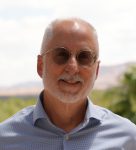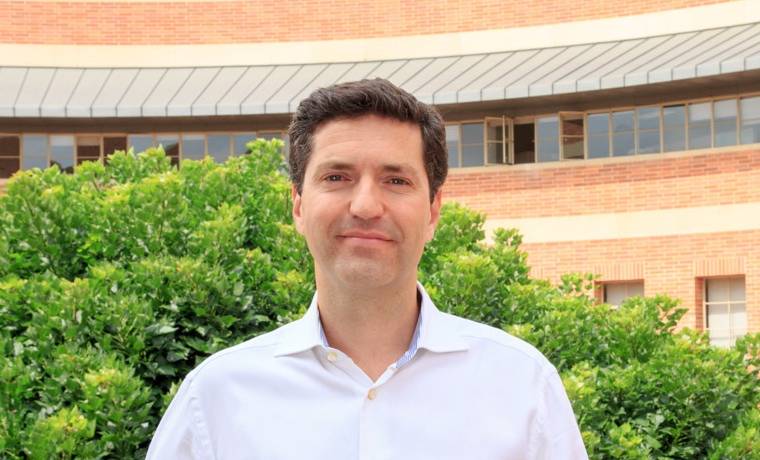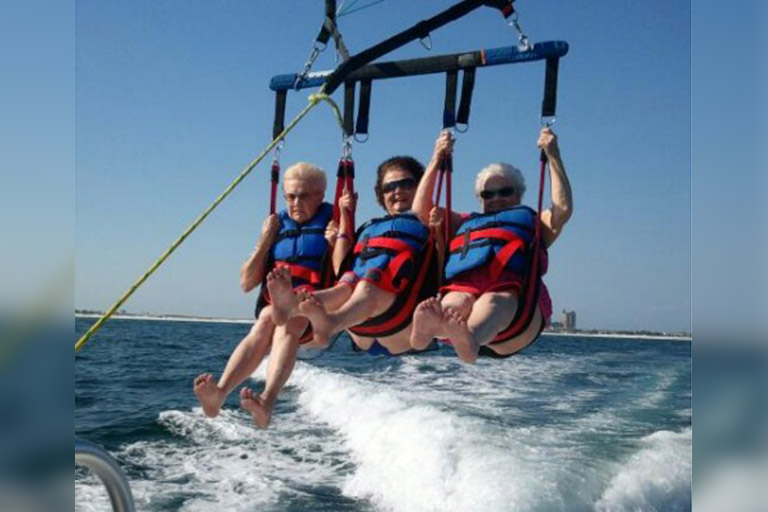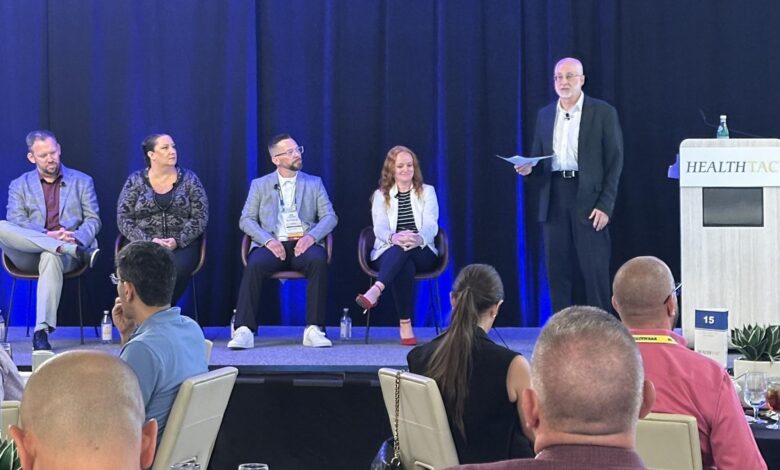
HEALTHTAC West 2025 Panel: Sales & Marketing: Turning Leads Into Move-Ins, Part 1
By Jim Nelson | September 30, 2025
NEWPORT BEACH, CA — When it came time for the annual west coast edition of HEALTHTAC/Senior Living News executive event, we offered several panel conversations, including one on sales and marketing.
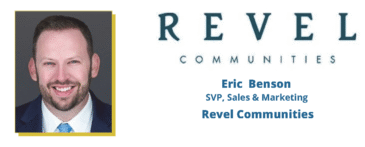 The panelists were Revel Communities’ Senior Vice President of Sales and Marketing Eric Benson; VP of Senior Living at Guardian, Abbey Kent; Joe Leonard, TSOLife’s director of revenue strategy; and Rebecca Merriman, a director of sales for The Arbor Company.
The panelists were Revel Communities’ Senior Vice President of Sales and Marketing Eric Benson; VP of Senior Living at Guardian, Abbey Kent; Joe Leonard, TSOLife’s director of revenue strategy; and Rebecca Merriman, a director of sales for The Arbor Company.
There’s a bit of a dichotomy going on in senior living these days; there are more seniors than ever, and yet we’re still looking at less-than-100 percent occupancy in communities everywhere. And making it more challenging for senior living salespeople, more seniors than ever plan on skipping senior housing altogether. With all that going on, is there a way through sales and marketing to reach more of those reluctant seniors? Marketing is digital, it’s SEO, it’s AI, it’s social media. We know all that. It’s also old school stuff like direct mail, local partnerships and community events, but what else?
As the moderator, I asked the panelists to share some of the things that make it challenging to get to 100 percent occupancy.
REBECCA MERRIMAN: The first thing for us is limited availability of preferred floorplans, as well as dealing with internal transfers — that slows down our whole process of room turns, to actually get to an available room to sell. And then lastly, I would say a lack of urgency when dealing with independent residents.
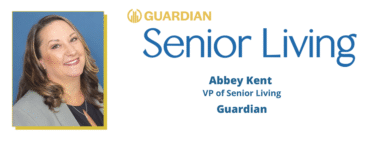 ABBEY KENT: One of the largest concerns is education to the staff; as long as your sales folks are strategically placed, with the right regional directors and operations to get to that 100 percent, understanding the difference between physical occupancy and financial occupancy can make a world of difference. Understanding the difference between giving an incentive or a move-in gift versus a concession can make a difference in getting to that 100 percent; the difference between moving in on July 31 versus August 1; understanding and sharing the ownership goals and occupancy can really make a huge difference in that category; the right people in the right place — the whole team needs to be on point, each category operating as they should; and the length of time that people choose to move, especially in independent [living]. The very most important thing you can do is a home visit; even if it’s not assisted living or memory care, getting to know them and becoming their family will help overcome those challenges of stalling and denial.
ABBEY KENT: One of the largest concerns is education to the staff; as long as your sales folks are strategically placed, with the right regional directors and operations to get to that 100 percent, understanding the difference between physical occupancy and financial occupancy can make a world of difference. Understanding the difference between giving an incentive or a move-in gift versus a concession can make a difference in getting to that 100 percent; the difference between moving in on July 31 versus August 1; understanding and sharing the ownership goals and occupancy can really make a huge difference in that category; the right people in the right place — the whole team needs to be on point, each category operating as they should; and the length of time that people choose to move, especially in independent [living]. The very most important thing you can do is a home visit; even if it’s not assisted living or memory care, getting to know them and becoming their family will help overcome those challenges of stalling and denial.
ERIC BENSON: I think the time period that you talked about is one of the key pieces; 95 percent of them don’t want to be there, and so they’re coming to us later and muddying up what used to be SNF, AL, IL; I’ve talked to a number of people this week about how the SNFs are now just TCUs and high acuity, and the ALs are what SNFs used to be. And I think the ILs are starting to become more what the ALs used to be. But I also think the financial makeup of the resident changes quite a bit; 15 years ago, when I was doing intake on residents, we’d say, “Okay, we’ve got this pension, Social Security,” and we still had the tail end of World War II veterans and if you had the VA benefits from a Vietnam, a person that served there, it could be a little bit more tricky; Korea was tough. So, now the pensions are almost gone. The veteran benefits, or veteran benefits for a spouse, are different too, and especially for those of us who are private pay, it becomes a lot more of a shallow pool to draw from.
Merriman has 98, 99 percent occupancy at her community, with 60 or 70 people wait-listed, so I asked her about a program they have for staying in touch with everyone on the waitlist.
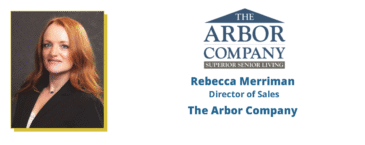 RM: We came up with our Depositors Club as not only a place in line for them, but to keep them engaged through the process, while they’re waiting. About every eight weeks we’ll host a special event just for them; sometimes we’ll do it inhouse, and we’ll lead it with one of our department heads, like our executive director — she likes to do a sip and paint class; we’ve had our dining director do cooking demonstrations. Sometimes we’ll do it outside of the community as well, like at a local restaurant or venue, so they are getting familiar with the local area outside of the community. At each of these events, we also bring in current residents so that way they have a peer to talk to, and they can pick their brains about what day-to-day life is actually like at the community. It also helps them build those friendships, so when they come in they already have those relationships built in, a lot of friendly faces. So, move-in day isn’t a transition period, it’s like a homecoming for them.
RM: We came up with our Depositors Club as not only a place in line for them, but to keep them engaged through the process, while they’re waiting. About every eight weeks we’ll host a special event just for them; sometimes we’ll do it inhouse, and we’ll lead it with one of our department heads, like our executive director — she likes to do a sip and paint class; we’ve had our dining director do cooking demonstrations. Sometimes we’ll do it outside of the community as well, like at a local restaurant or venue, so they are getting familiar with the local area outside of the community. At each of these events, we also bring in current residents so that way they have a peer to talk to, and they can pick their brains about what day-to-day life is actually like at the community. It also helps them build those friendships, so when they come in they already have those relationships built in, a lot of friendly faces. So, move-in day isn’t a transition period, it’s like a homecoming for them.
The internet is, of course, a major source of marketing in senior living, so I asked Leonard how to best utilize it.
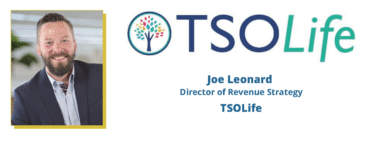 JOE LEONARD: If we’re going after an assisted living group of individuals, we want to figure out how we can tailor that messaging. I think what we see now is more and more professionals are using our own instance of ChatGPT. How quickly can we refine a message and then flip it from, “Help me refine this message for community staff versus a corporate director.” It’s still the same conversation, but that lens that you’ve pivoted it through has been sort of refracted and defined a lot stronger. Also, we have so many amazing channels now across the internet. I mean, it’s one thing to leverage your own website and make sure that it’s actually able to capture your leads and to see who’s interested in using your product. I think it’s also an interesting thing that I see more and more in this space, people leveraging each other’s networks. That, to me, is so promising, because then you’re marketing each other in a noncompetitive way, which just elevates the space more, it creates a stronger awareness.
JOE LEONARD: If we’re going after an assisted living group of individuals, we want to figure out how we can tailor that messaging. I think what we see now is more and more professionals are using our own instance of ChatGPT. How quickly can we refine a message and then flip it from, “Help me refine this message for community staff versus a corporate director.” It’s still the same conversation, but that lens that you’ve pivoted it through has been sort of refracted and defined a lot stronger. Also, we have so many amazing channels now across the internet. I mean, it’s one thing to leverage your own website and make sure that it’s actually able to capture your leads and to see who’s interested in using your product. I think it’s also an interesting thing that I see more and more in this space, people leveraging each other’s networks. That, to me, is so promising, because then you’re marketing each other in a noncompetitive way, which just elevates the space more, it creates a stronger awareness.
EB: I used to tell my executive directors, “The front porch is not where you’re going to close a sale, but you could lose a sale.” It’s the first impressions of your building, make sure that it shows well. Our front porch has become the website; we’re not going to necessarily close them off the website, but you can lose them quickly off the website; because our marketing has shifted so hard digitally, and all to funnel them to the website, [it’s important to make] sure that our website’s sticky, it’s going to capture their attention. They’re going to really spend time there. I think your first impression has become the website, first and foremost. I look at that as ground zero; the first battle is to capture them there. So, how do you make the website speak to your specifically targeted resident that’s going to be interested in your building? You have to know your residents. It becomes so important.
In part 2 of this article, the panelists will get into leveraging AI, the human element of senior living, and the importance of engaging the empty chair on the tour.
